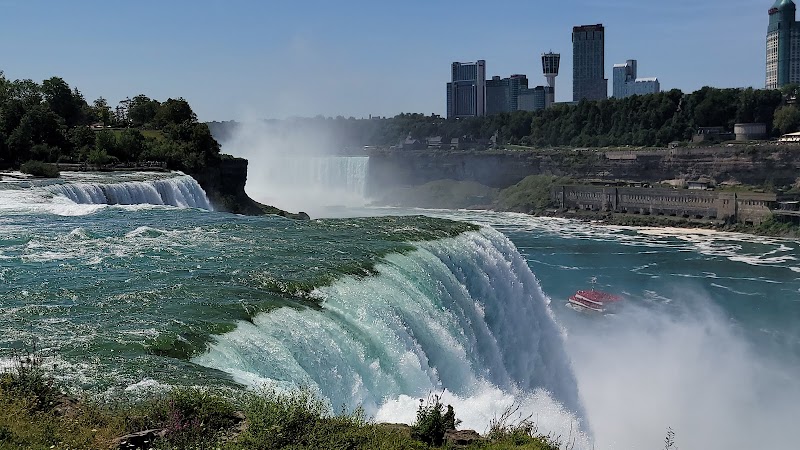
Experience Heritage Day in East Gwillimbury, where history and nature intertwine through accessible trails and community festivities. Discover practical tips for navigating the terrain and engaging with local culture on this rewarding outdoor journey.
Bring Adequate Water
The trail covers roughly 6 km with minimal shade in some stretches; carrying at least one litre of water per person will keep you hydrated throughout the day.
Wear Footwear with Good Traction
Some sections near the Holland River can turn muddy after rain, so opt for sturdy hiking boots or trail shoes that handle mixed terrain effectively.
Start Early to Avoid Crowds
Beginning your hike by mid-morning ensures cooler temperatures and a more relaxed experience around event locations and interpretive sites.
Dress in Layers
Temperatures can shift quickly, especially in spring and fall, so layering allows comfort regardless of weather fluctuations during the day.
Heritage Day in East Gwillimbury: Exploring the Past with Practical Adventure
Heritage Day in East Gwillimbury offers an immersive experience that invites visitors to engage with the region's rich history through outdoor exploration and community events. The heart of this celebration is set within scenic landscapes, where forested trails and historic landmarks stand shoulder to shoulder, daring you to connect with both nature and the echoes of the past. The terrain here is gentle—well-marked paths wind through a mix of open fields and mature hardwoods, with modest elevation changes typically under 100 metres, making it accessible for a broad range of adventurers.
This day is not just about looking back but experiencing how history lives in the environment and its people. Strolling along the paths of Holland Landing and the East Gwillimbury Heritage Trail, you encounter preserved buildings and interpretive signs that narrate tales of early settlers and indigenous presence. The natural setting plays an active role; rivers like the Holland River push gently onward, framing your journey with shimmering water reflections and soft ripples that match your pace.
Planning your Heritage Day visit requires some practical preparation. The trails stretch about 6 kilometres total, with ample rest points spattered near the historic sites. A mid-morning start is ideal, allowing you to enjoy cooler temperatures and the full schedule of events including heritage crafts and local food markets. Water is crucial—carrying at least one litre per person keeps dehydration at bay, especially during spring and summer celebrations.
Footwear with reliable grip serves well here, as sections near the riverbank can become muddy after rain. The day’s flow is relaxed but continuous; you won’t face challenging climbs but should be ready for a steady pace. Take time to pause and observe—songbirds claim the trees with a lively chorus, and small mammals peek cautiously from underbrush, reminding you that the environment is as fiercely itself as the stories told.
In essence, Heritage Day in East Gwillimbury combines outdoor enjoyment with a practical way to engage with local culture. Whether you're a casual walker or a history buff seeking fresh terrain for exploration, this event encourages active participation balanced with appreciation. It’s an invitation wrapped in nature’s own rhythm, where the past and present walk beside you.
Nearby Trips
All Adventures
Boat Charters
Water Activities
Adventures near East Gwillimbury, Ontario
Discover the unique and memorable adventures that make East Gwillimbury, Ontario special.
Frequently Asked Questions
Are dogs allowed on Heritage Day trails?
Yes, dogs are permitted but must be kept on a leash at all times to protect wildlife and respect other visitors.
Is there parking available near the Heritage Day events?
Multiple parking areas are designated around event sites like the East Gwillimbury Library and community centers, generally within walking distance of main trailheads.
Can visitors access historic buildings during Heritage Day?
Many preserved sites open their doors for guided tours and exhibitions on Heritage Day, offering hands-on insights into early settlement life.
Are there guided hikes or activities during the event?
Yes, local historians and conservation groups often lead guided walks, workshops, and family activities to enhance the educational aspect.
What wildlife might I see on the trails?
Visitors commonly encounter songbirds such as warblers, red-tailed hawks overhead, and small mammals like squirrels and rabbits, especially in quieter areas.
Are the trails stroller-friendly or wheelchair accessible?
Certain trail sections near event hubs are flat and well-maintained, making them accessible for strollers and wheelchairs, though more natural trail parts have uneven ground.
Recommended Gear
Sturdy Hiking Shoes
Provides grip and support on mixed terrain including potentially muddy or uneven sections.
Water Bottle or Hydration Pack
Ensures hydration on the approximately 6 km trail, especially during warmer months.
Layered Clothing
Allows adaptability to fluctuating temperatures, useful during early spring mornings and cooler evenings.
Insect Repellent
Recommended for managing mosquitoes and other insects during summer hikes.
Local Insights
Hidden Gems
- "The lesser-known lookout near the Holland River bridge offers serene water reflections and peaceful sitting spots away from main paths."
- "A small apple orchard east of the Heritage Trail invites visitors during harvest season to connect with local agriculture history."
Wildlife
- "Seasonal appearances of black-capped chickadees and great blue herons add life to the quieter moments between event sites."
- "Fox sightings are sporadic but possible in the early morning or late evening, particularly in the deeper wooded sections."
History
"East Gwillimbury’s history is rooted in early 19th-century farming communities and indigenous trade routes, preserved through restored buildings and interpretive programming during Heritage Day."
